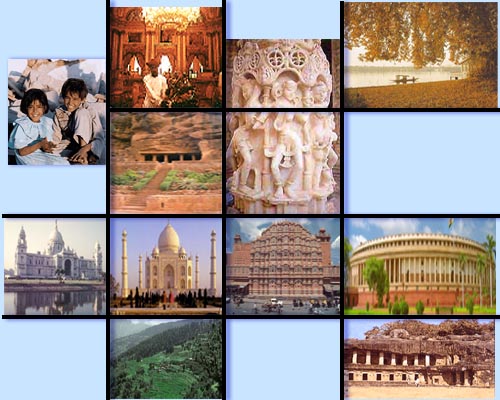National Profile
Indian Profile

About India
India is a country in South Asia. It is the seventh-largest country by area, the second-most populous country with over 1.2 billion people, and the most populous democracy in the world. Bounded by the Indian Ocean on the south, the Arabian Sea on the south-west, and the Bay of Bengal on the south-east, it shares land borders with Pakistan to the west China, Nepal, and Bhutan to the north-east; and Burma and Bangladesh to the east. In the Indian Ocean, India is in the vicinity of Sri Lanka and the Maldives; in addition, India's Andaman and Nicobar Islands share a maritime border with Thailand and Indonesia.
India is the seventh largest country in the world. Few countries in the world have such an ancient and diverse culture as India's. Variety in religion, racial and languages are a special hallmark.India a land of cultural and social diversity is all-pervading and yet a harmonious balance permeates throughout the social fabric.It stretches from the frozen Himalayas in the north to the tropical Indian Ocean in the south, with the sacred Ganges River flowing from west to east.
History
Ancient India
The earliest anatomically modern human remains found in South Asia date from approximately 30,000 years ago.Nearly contemporaneous Mesolithic rock art sites have been found in many parts of the Indian subcontinent, including at the Bhimbetka rock shelters in Madhya Pradesh.Around 7000 BCE, the first known Neolithic settlements appeared on the subcontinent in Mehrgarh and other sites in western Pakistan.These gradually developed into the Indus Valley Civilisation,the first urban culture in South Asia; it flourished during 2500–1900 BCE in Pakistan and western India. Centred around cities such as Mohenjo-daro, Harappa, Dholavira, and Kalibangan, and relying on varied forms of subsistence, the civilization engaged robustly in crafts production and wide-ranging trade
During the period 230 BCE to 220 CE, Satavahana empire covered much of India. The Satavahanas are credited for establishing peace in the country, resisting the onslaught of foreigners after the decline of Mauryan Empire. Satavahanas are also credited with furthering Budhism in India including Ajanta caves.
Modern India
Historians consider India's modern age to have begun sometime between 1848 and 1885. The appointment in 1848 of Lord Dalhousie as Governor General of the East India Company set the stage for changes essential to a modern state. These included the consolidation and demarcation of sovereignty, the surveillance of the population, and the education of citizens. Technological changes—among them, railways, canals, and the telegraph—were introduced not long after their introduction in Europe
After World War I, in which some one million Indians served, a new period began. It was marked by British reforms but also repressive legislation, by more strident Indian calls for self-rule, and by the beginnings of a non-violent movement of non-cooperation, of which Mohandas Karamchand Gandhi would become the leader and enduring symbol. During the 1930s, slow legislative reform was enacted by the British; the Indian National Congress won victories in the resulting elections.The next decade was beset with crises: Indian participation in World War II, the Congress's final push for non-cooperation, and an upsurge of Muslim nationalism. All were capped by the advent of independence in 1947, but tempered by the bloody partition of the subcontinent into two states: India and Pakistan
Politics
India is the world's most populous democracy. A parliamentary republic with a multi-party system, it has six recognised national parties, including the Indian National Congress and the Bharatiya Janata Party (BJP), and more than 40 regional parties. The Congress is considered centre-left or "liberal" in Indian political culture, and the BJP centre-right or "conservative". For most of the period between 1950—when India first became a republic—and the late 1980s, the Congress held a majority in the parliament. Since then, however, it has increasingly shared the political stage with the BJP, as well as with powerful regional parties which have often forced the creation of multi-party coalitions at the centre
In the Republic of India's first three general elections, in 1951, 1957, and 1962, the Jawaharlal Nehru-led Congress won easy victories. On Nehru's death in 1964, Lal Bahadur Shastri briefly became prime minister; he was succeeded, after his own unexpected death in 1966, by Indira Gandhi, who went on to lead the Congress to election victories in 1967 and 1971. Following public discontent with the state of emergency she declared in 1975, the Congress was voted out of power in 1977; the then-new Janata Party, which had opposed the emergency, was voted in. Its government lasted just over three years
National symbols
Flag:Tricolour
Emblem:Sarnath Lion Capital
Anthem:Jana Gana Mana
Song:Vande Mataram
Calendar:Saka
Game:Hockey
Flower:Lotus
Fruit:Mango
Tree:Banyan
Bird:Indian Peafowl
Land animal:Royal Bengal Tiger
Aquatic animal:River Dolphin
River:Ganga
States
1.Andhra Pradesh
